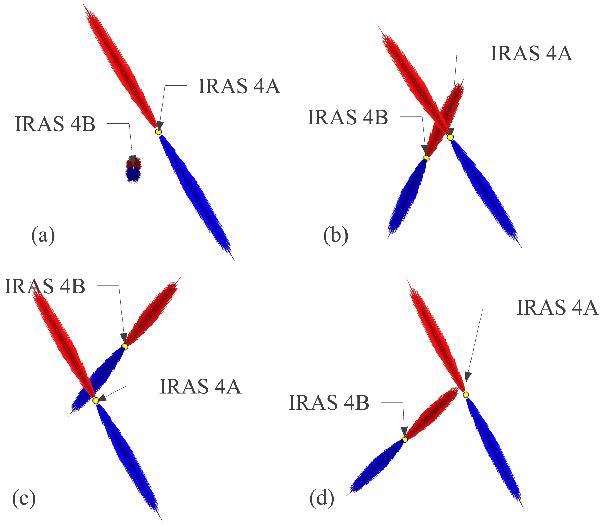Fig. 7

Four different projection scenarios of the IRAS 4A and 4B outflows are presented, assuming that the two outflows have similar physical extents. These scenarios are treated by keeping the position of IRAS 4A fixed and rotating the plane of the sky through ~60° for better comprehension the difference of IRAS 4B in Panels b)–d). Panel a) shows the geometry projected on the plane of the sky; Panel b) the protostars are at the same distance and very close to each other so that their envelopes overlap; Panel c) IRAS 4A is in front of IRAS 4B; and Panel d) IRAS 4B is in front of IRAS 4A. In the latter two scenarios, the envelopes may be sufficiently distant from each other and may not overlap.
Current usage metrics show cumulative count of Article Views (full-text article views including HTML views, PDF and ePub downloads, according to the available data) and Abstracts Views on Vision4Press platform.
Data correspond to usage on the plateform after 2015. The current usage metrics is available 48-96 hours after online publication and is updated daily on week days.
Initial download of the metrics may take a while.






